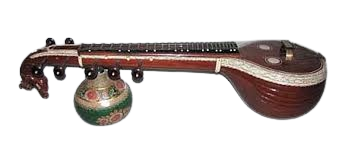Gotipua Dancers: From Stardom to Anonymity
In the vibrant cultural landscape of rural Odisha, the traditional Gotipua Dance form holds a unique and cherished place. Young boys, often starting as early as five years old, are trained to perform this captivating art known as Gotipua Dancers, which involves dressing as girls to honor Hindu gods and goddesses. With their colorful costumes and graceful movements, these child artists are not just performers; they are celebrated figures, basking in the warmth of applause and admiration.
The Gotipua Tradition
Gotipua, which means “one boy,” has deep historical roots in Odisha, tracing back to the 16th century. The dance form is characterized by its elaborate footwork, expressive gestures, and the use of facial expressions to convey emotions. Young boys, often from rural backgrounds, are recruited into this tradition, where they undergo rigorous training in dance, music, and acting. The performances are often staged at temples and cultural festivals, making these young artistes the stars of the local scene.
However, the glamour and recognition that accompany early fame can quickly fade as these young performers transition into adolescence. The moment they hit puberty, the dynamics of their lives change drastically, leading many to face a stark reality.
The Transition to Adulthood
As Gotipua dancers grow older, they encounter a challenging transition. The once adoring audiences that celebrated their performances may diminish as they become less marketable in a society that often emphasizes physical appearance and traditional gender roles. Many dancers find themselves grappling with identity crises, as the skills they honed as performers do not readily translate into viable career options.
Satyasundar Barik reports that this transition leaves many former child stars without the necessary skills for jobs in other sectors, leading to a future marked by uncertainty. The pressure to conform to societal expectations often sidelines their artistic talents, pushing them into anonymity.
The Impact of Cultural Shifts
Cultural shifts and changing social dynamics also contribute to the challenges faced by Gotipua dancers. While traditional art forms like Gotipua are integral to Odisha’s heritage, the allure of modern professions often overshadows these time-honored practices. Many families encourage their children to pursue more conventional career paths, fearing that the dedication to dance may not yield tangible benefits.
Furthermore, the decline in support for traditional arts and a lack of financial stability in the cultural sector exacerbate these challenges. With fewer opportunities to showcase their talents, many dancers drift away from their craft, losing touch with the art that once defined their childhood.
Preserving the Legacy
Efforts are being made to preserve the Gotipua tradition and provide better support for its young artistes. Workshops, mentorship programs, and community initiatives are being implemented to help dancers navigate the transition into adulthood while retaining their connection to the art form. By integrating skills training, financial literacy, and career counseling into the existing dance curriculum, organizations are working to empower these young individuals.
The importance of preserving this cultural heritage extends beyond the dance form itself; it is about safeguarding the stories and identities of the young dancers who embody it. While the road ahead may be fraught with challenges, the resilience of these artistes and their commitment to their craft can pave the way for a brighter future.
Conclusion
The journey of Gotipua dancers from boyhood stardom to adulthood anonymity is a poignant reminder of the complexities of cultural traditions in a rapidly changing world. As Satyasundar Barik highlights, it is essential to recognize and support these young artistes, ensuring that their contributions to Odisha’s rich cultural tapestry are celebrated and sustained. By addressing the challenges they face and providing pathways for growth, we can help keep the spirit of Gotipua alive for generations to come.
See Also- Nanda Devi mela



